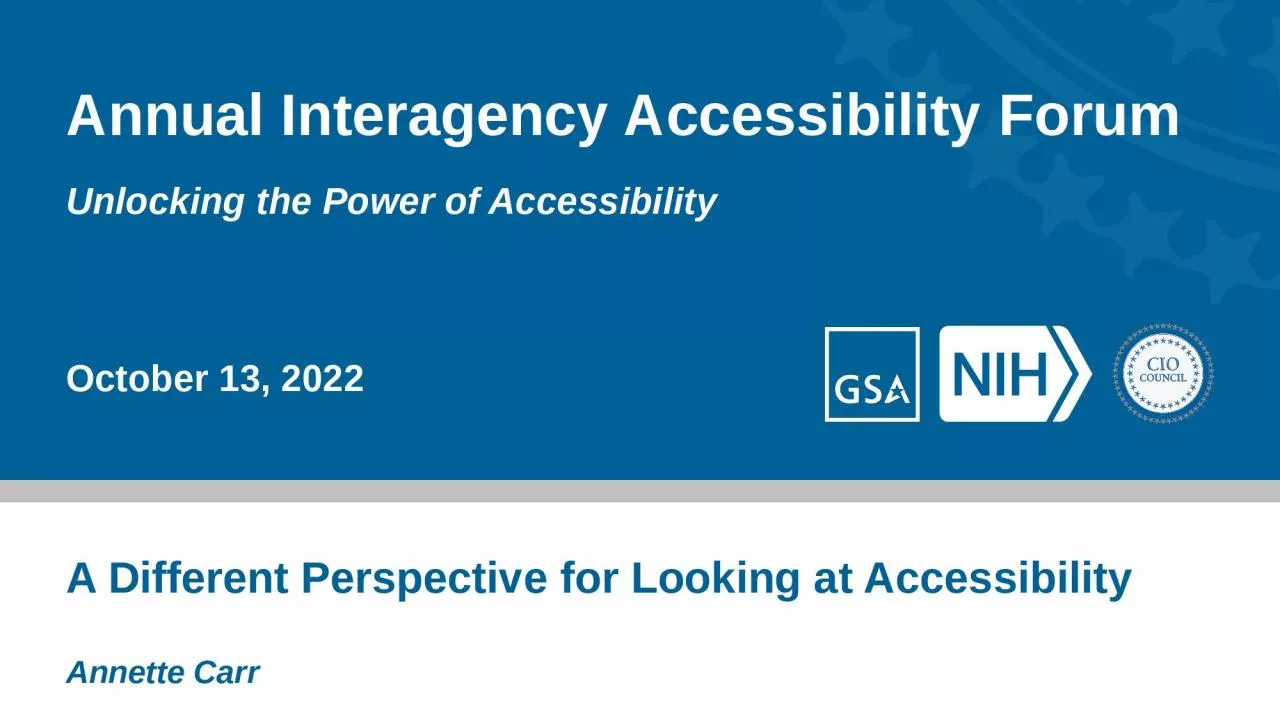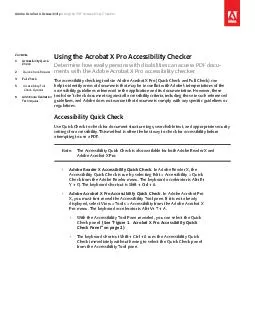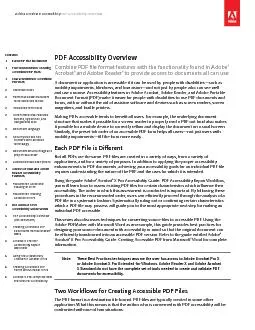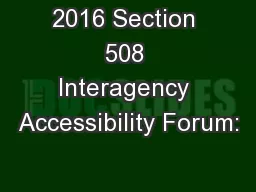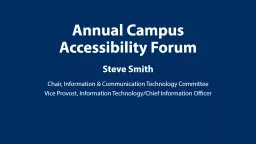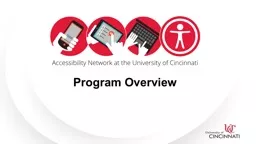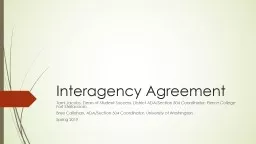PPT-Annual Interagency Accessibility Forum
Author : megan | Published Date : 2023-11-20
Unlocking the Power of Accessibility October 13 2022 A Different Perspective for Looking at Accessibility Annette Carr Presenter Annette Carr Disability Program
Presentation Embed Code
Download Presentation
Download Presentation The PPT/PDF document "Annual Interagency Accessibility Forum" is the property of its rightful owner. Permission is granted to download and print the materials on this website for personal, non-commercial use only, and to display it on your personal computer provided you do not modify the materials and that you retain all copyright notices contained in the materials. By downloading content from our website, you accept the terms of this agreement.
Annual Interagency Accessibility Forum: Transcript
Download Rules Of Document
"Annual Interagency Accessibility Forum"The content belongs to its owner. You may download and print it for personal use, without modification, and keep all copyright notices. By downloading, you agree to these terms.
Related Documents

